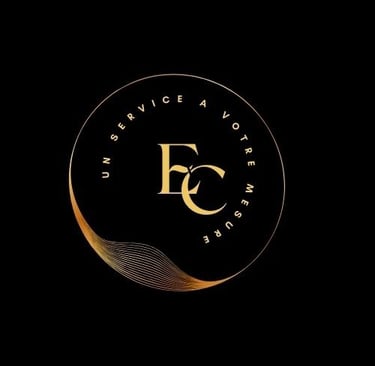Between Tradition and Modernity: How Audits and Business Plans Have Evolved for SMEs
Discover how audit and business planning practices have transformed dramatically over the past 20 years. A humorous yet insightful take for SME managers—plus practical solutions tailored to your pace and challenges with Audits.
MANAGEMENT
LYDIE GOYENETCHE
3/14/20254 min read


Between Tradition and Modernity: How Audits and Business Plans Have Evolved for SMEs
For SME owners, audits and business plans have changed dramatically over the past twenty years. What was once a meticulous, time-consuming process has become a fast-paced, digital-driven necessity. This transformation is not just about efficiency; it reflects a shift in how businesses operate, how decisions are made, and how professionals must adapt.
This article takes a humorous yet concrete look at the evolution of audits and business planning, offering insights into the advantages and challenges of modern methods while providing practical solutions for those trying to navigate today’s high-speed business environment.
From a Leisurely Stroll to a High-Stakes Marathon
Two decades ago, conducting an audit or preparing a business plan felt like a quiet walk through the countryside. There was time to analyze the terrain, study the landscape, and carefully map out the best path forward. Today, the same process feels more like an urban marathon—relentless, unpredictable, and filled with last-minute hurdles. Business owners no longer have the luxury of deliberate reflection; they must act swiftly, making critical decisions based on data that updates in real time.
What exactly has changed? Let’s take a journey back in time and explore how the tools, expectations, and realities of business planning and auditing have evolved.
The "Moleskine" Audit: A Scene from 2003
Imagine an SME struggling to understand why its sales have stagnated. In 2003, an audit would begin with a formal visit to the company’s offices. The auditor would be welcomed with coffee and croissants, engaging in lengthy conversations with managers to gain insight into operations, morale, and company culture. Everything was recorded meticulously in a Moleskine notebook, as handwritten notes were the cornerstone of thorough analysis.
The process unfolded over months. Data was reviewed manually, calculations were performed by hand, and reports took shape in thick binders filled with detailed recommendations. The final deliverable was an eighty-page document, carefully printed and bound, presented in a formal meeting where polite applause followed its unveiling. The entire process, from initial assessment to final recommendations, could take up to six months.
The 2023 Audit: A Silicon Valley Mindset
Fast forward to today, and the same SME faces the same challenge—but under vastly different conditions.
Auditors no longer arrive with notebooks and leisurely conversations. Instead, they come equipped with a laptop, a suite of digital tools like Google Analytics and Semrush, and a thermos of coffee, as they no longer have time to wait for one to be offered. The focus has shifted from exploratory discussions to KPI-driven precision. Every interaction is brief, every question pointed, and every analysis automated.
Instead of poring over printed reports, businesses receive interactive dashboards that allow real-time monitoring of performance metrics. The entire process, once an extended, methodical investigation, is now condensed into two weeks.
The Classical Symphony of Business Plans in 2003
If preparing an audit was once a slow and deliberate process, drafting a business plan followed the same rhythm. Entrepreneurs in 2003 would dedicate months to extensive market research, building five-year financial projections in elaborate Excel spreadsheets, and crafting a comprehensive strategy document.
The result was a lengthy, meticulously formatted business plan, bound and polished, ready to be presented to investors and banks in formal meetings. Every figure was justified, every risk analyzed, and every aspect of the business outlined in excruciating detail. This document was both a blueprint and a statement of credibility, often determining whether a project would receive funding.
The 2023 Business Plan: A Pitch in the Age of TikTok
In today’s world, the pace has accelerated to the point where no entrepreneur has time to produce a hundred-page business plan. Investors no longer expect them. Instead, the business plan has been distilled into a ten-slide pitch deck, packed with visually compelling charts, concise financial forecasts, and clear market positioning.
Market research that once took months is now completed in minutes with tools like Statista. Financial projections are generated automatically using platforms like LivePlan. The presentation, which used to take place in boardrooms, now happens over Zoom, with decisions made in half the time. The entire process, from conception to final pitch, is often completed in under two weeks.
The SME Owner at the Heart of This Transformation
This rapid shift in business practices stems from several key factors. The pressure of competition has increased, forcing business leaders to make decisions faster than ever. Digital tools have enabled real-time data analysis, eliminating the need for months of manual calculations. The culture of immediacy has redefined expectations, with businesses now expected to react instantly to market changes and emerging opportunities.
The Benefits and Pitfalls of a High-Speed Business World
The modern approach to audits and business plans offers undeniable advantages. Processes that once took months now take weeks, allowing companies to be more agile. Automation has reduced costs, and the focus on real-time data means that decisions can be based on current market conditions rather than outdated projections.
However, there are downsides to this accelerated approach. Depth of analysis is often sacrificed in favor of speed. Long-term strategic thinking has been overshadowed by the demand for quick results. The human element, once integral to the audit and planning process, has diminished, replaced by data-driven algorithms and automated reporting.
Finding the Right Balance for Your SME
This transformation reflects a broader shift in how society values speed over depth. We want immediate results, but often at the expense of long-term sustainability. Instead of rushing to keep up with an ever-accelerating business environment, perhaps the wiser approach is to strike a balance.
For SME owners, the best solution may be a hybrid model—a combination of modern efficiency and traditional depth. A monthly subscription with an experienced consultant could provide the best of both worlds: the speed necessary to remain competitive, combined with the wisdom and strategic foresight that ensure long-term success.
Because at the end of the day, some things still require time to be done right.


EUSKAL CONSEIL
0033782505766
euskalconseil@gmail.com
This website uses only Plausible Analytics, a privacy-friendly web analytics tool.
No cookies are used, and no personal data is collected from visitors.
The system is fully compliant with the General Data Protection Regulation (GDPR), the ePrivacy Directive, and CNIL recommendations.
You can read more about Plausible’s data policy here: https://plausible.io/data-policy